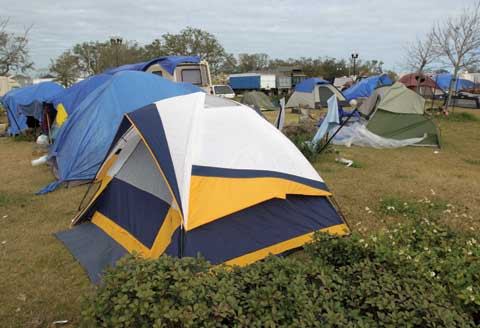After The Money
Securing the insurance payments is only half the battle.
Spiro Latsis’ voice rises in exasperation. “A building permit must be pulled by a licensed Jefferson Parish contractor, but it’s impossible to find such a contractor during these times,” laments the co-founder and CEO of Spartan Properties, a family-owned residential and commercial management company with 26 rental units in Orleans and Jefferson parishes.
Even if you do, he says, the lines are out the door, and the wait is hours long. “Many of the developers I know have completed repairs without permits.”
With or without permits, beginning the work is a challenge. “You contact your loyal contractors or vendors, who assure you that they can meet a deadline,” explains David Abbenante, director of property management for New Orleans-based Historic Restoration. “Two days into their work they may lose half their staff due to another contractor hiring them away or some of them just burning out and leaving the city for good.”
Though resolute, Abbenante is clearly frustrated. “For the first time in my career, I don’t know what to do speed up work on properties,” he admits. “What else can we do but yell, beg, plead, and continue to offer checks to expedite the process? Every traditional carrot that can be dangled has been dangled in front of contractors, and I am sure they want to take a bite, but no one seems to get there.”
–Margot Carmichael Lester
Lessons From The Storm
Hurricane Katrina forced Gulf Coast native David Abbenante to evacuate for the first time in his life. He ended up leasing space for a makeshift office and living in an apartment with 18 family members, two dogs, and a cat. Looking back, the director of property management for New Orleans-based Historic Restoration offers a few lessons from the storm:
- Do not rely on cell phones as the only source of contact. Get a landline number for employees who are evacuating during the storm and have a back-up Web site where staff can report in.
- Take out that old contingency plan and update it to address issues experienced in New Orleans: no power for months, residents unable to access the property, and unsafe drinking water.
- Make priority service agreements with vendors in the event of a disaster.
- Provide housing, subject to availability, for vendors’ employees, your key employees, and others vital to the rebuilding.
- Establish personal communications. Residents want to talk to a person, not receive an email or simply check a Web site. Historic Restoration manned an emergency phone line for residents; it rang non-stop.
- Read your insurance policy and understand what is not covered. Most flood policies don’t include business interruption coverage.
- Never, ever, ever open a refrigerator that was full of food and sat without electricity for more than 30 days.
